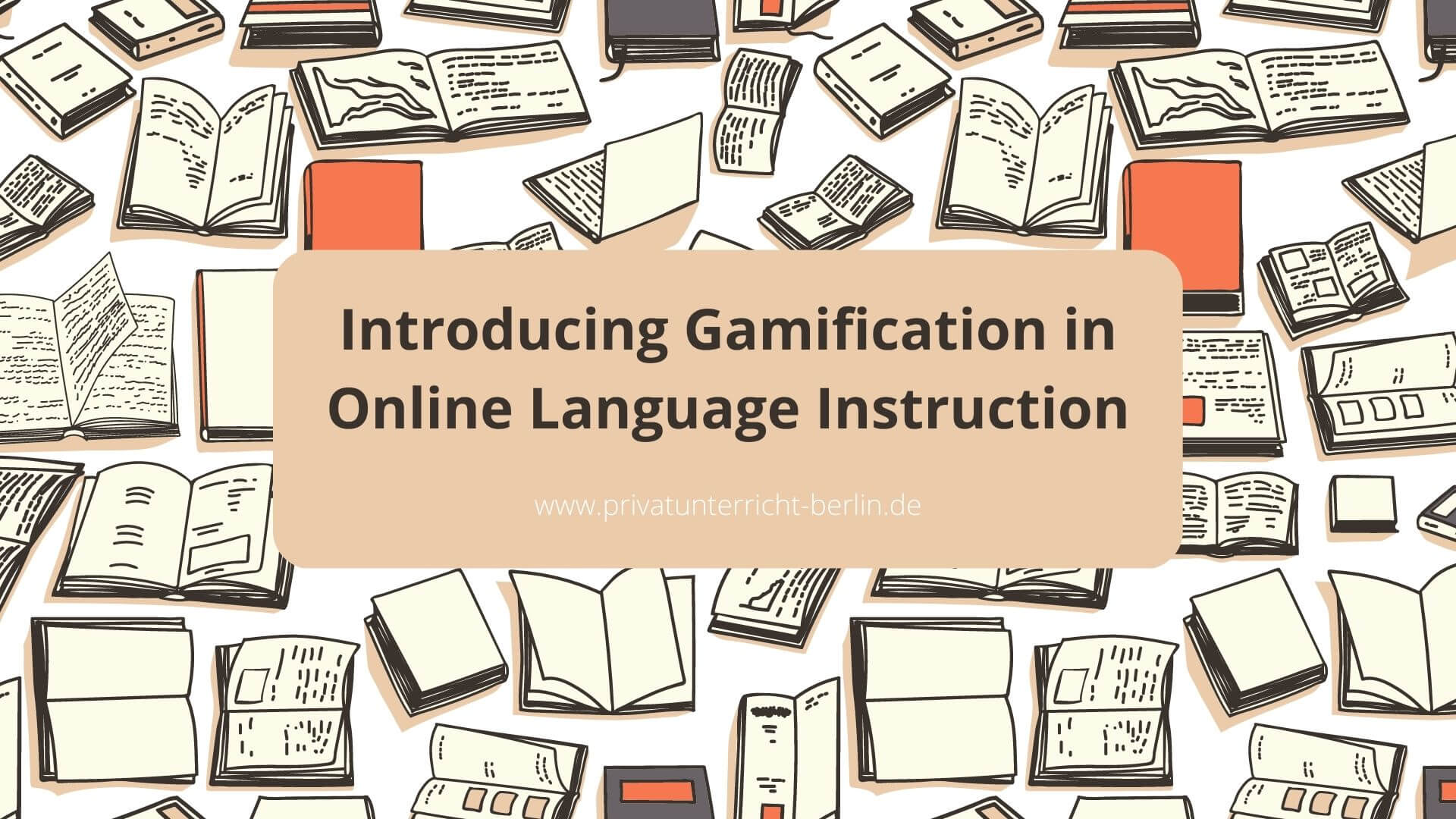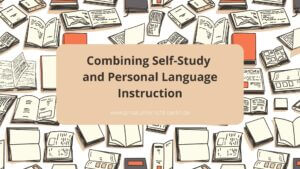Your Language Journey, Your Way: Start with a Private Tutor

Introducing Gamification In Online Language Instruction
Hey there, language learners! Are you tired of the traditional methods of online language instruction? Do you find staying motivated and engaged while learning a new language challenging?
Well, fear not because gamification is here to save the day! As an instructional designer with years of experience in gamifying educational content, introducing gamification elements in online language instruction can significantly impact your learning experience.
By incorporating game-like features such as points, badges, leaderboards, and challenges into language courses, students are more likely to stay engaged and motivated throughout their learning journey. In this article, we will explore the benefits of gamification in online language instruction and provide tips for how educators can integrate these elements into their courses effectively.
So please sit back, relax, and let’s dive into the world of gamified language learning!
Table of Contents
Benefits Of Gamification In Language Learning
As an instructional designer, I aim to create interactive learning experiences that are engaging and effective. Gamification offers a unique opportunity to achieve this goal in language instruction by incorporating game-like features into the curriculum.
These features make learning enjoyable and provide personalized feedback to learners, which can help them improve their language skills.
Interactive learning is essential in language instruction because it allows students to actively engage with the material and apply what they have learned in real-time scenarios. With gamification, we can incorporate activities such as simulations or role-playing games that simulate authentic situations where learners must use their language skills.
Additionally, personalized feedback provides specific information on areas of strength and weakness, allowing learners to focus on those areas for improvement. Incorporating these elements into our courses can create a more engaging and practical experience for language learners.
As we explore game-like features to incorporate into our language courses, we must consider how they will enhance the overall learning experience rather than just being added for novelty. In the next section, I will outline some key features that can be incorporated while keeping the focus on improving language proficiency.
Game-Like Features To Incorporate Into Language Courses
Now that we understand the benefits of gamification in language learning, let’s explore how to incorporate game-like features into our online courses.
Interactive exercises are an essential component of gamified language instruction. Rather than just reading and listening to content, students should have opportunities to engage with it actively.
One way to do this is through interactive quizzes or games that test their understanding of vocabulary, grammar rules, and sentence structure. These can be incorporated throughout the course as formative assessments, allowing learners to receive personalized feedback on areas where they need improvement while increasing engagement and motivation.
Additionally, creating a leaderboard or other forms of competition can encourage healthy rivalry among classmates, further driving engagement and motivation toward mastering the language.
Increasing Engagement And Motivation Through Gamification
Adding gamification elements to online language instruction may be unnecessary or distracting. However, research has shown that incorporating rewards and progression can significantly increase engagement and motivation among learners.
By offering badges or points for completing tasks or achieving milestones, students feel a sense of accomplishment and are more likely to continue working towards their language learning goals.
In addition, competition and collaboration can also enhance the overall learning experience. Games that involve friendly competition between peers can motivate students to work harder to outdo one another. In contrast, collaborative games foster teamwork skills essential for effective communication in real-life situations.
Ultimately, integrating gamification into online language instruction provides an interactive and engaging environment and helps students achieve success in their language learning journey through intrinsic and extrinsic motivators.
As we delve deeper into the effective integration of gamification elements in online instruction, it’s essential to consider the specific needs of our learners. Different game mechanics appeal to other individuals, so it’s crucial to offer various options that cater to multiple learning styles and preferences.
Additionally, monitoring student progress through data analysis allows us, as instructional designers, to adjust our approach accordingly, ensuring optimal engagement and learning outcomes. By thoughtfully incorporating gamification elements into online language instruction, we can create an immersive and rewarding educational experience for all learners.
Effective Integration Of Gamification Elements In Online Instruction
Welcome to the next phase of your gamification journey! As an instructional designer, it is essential to understand the challenges of implementing gamification elements in language instruction.
One such challenge can be ensuring that the game mechanics are aligned with the learning objectives and are consistent with the overall educational experience. To overcome this, we recommend starting small by incorporating simple game mechanics like points, badges, and leaderboards into existing lessons.
Another challenge can be measuring the effectiveness of gamification in language instruction. Gathering data on students’ engagement levels and performance throughout the course is essential. This information will help instructors identify which game mechanics work best for their learners and make adjustments as needed.
We suggest using analytics tools built into online platforms or third-party applications to measure student progress effectively. By doing so, you’ll better understand how effective your gamification implementation has been and its impact on language learning outcomes.
As we move forward, let’s explore success stories; how gamification has improved language learning through real-life examples of institutions that successfully implemented these strategies.
Success Stories: How Gamification Has Improved Language Learning
As a gamification instructional designer, I’ve seen the power of incorporating game elements in online language instruction. Students are more engaged and motivated to learn when they feel like playing a game rather than completing mundane exercises.
But don’t just take my word for it; numerous success stories show how gamification has improved language learning. Real-life examples include Duolingo, an app that uses gamification techniques such as points and levels to make language learning fun and addictive. According to their website, 34 hours of Duolingo is equivalent to one semester of university-level education.
Another example is FluentU, which incorporates videos and interactive captions with quizzes to create a uniquely immersive experience. These apps have not only increased student engagement but also produced measurable outcomes such as higher retention rates and faster progress toward fluency.
Gamification in online language instruction truly works wonders!
Frequently Asked Questions
What Is Gamification?
Gamification is a modern approach to learning that involves using game design elements in non-game contexts. It aims to motivate learners by incorporating competition, rewards, and other engaging features into instructional materials.
The benefits of gamification include increased engagement, motivation, and retention rates among learners. In contrast with traditional learning methods, which rely on lectures and memorization, gamification offers an interactive experience that encourages learners to take an active role in their education.
As a gamification instructional designer, I aim to create innovative and effective teaching strategies that meet the needs of today’s learners. Whether you are new to this exciting field or looking for ways to enhance your existing skills, understanding the principles of gamification can help improve your ability to engage students and achieve better learning outcomes.
What Are Some Common Game-Like Features Used In Language Courses?
Imagine you’re on a journey to learn a new language and desperately need motivation. You want to feel like you’re making progress toward your goal while having fun at the same time. That’s where gamification comes in handy!
Interactive exercises that keep learners engaged and motivated are just one example of how gamification can make language learning more enjoyable. Additionally, leaderboard competitions offer healthy peer competition, encouraging learners to strive for better results.
As a gamification instructional designer, it is my job to create engaging courses with game-like features that help learners enjoy their language learning experience and achieve their goals faster than ever!
How Can Gamification Improve Language Learning Outcomes?
To truly engage language learners, gamification offers many benefits that traditional learning methods cannot match. With the power to create an immersive environment for students, gamified language courses can significantly improve retention rates and engagement levels.
By incorporating game-like features such as leaderboards, achievement badges, and rewards systems into online language instruction, we can keep students motivated and on track with their learning goals. Gamification also allows for personalized feedback and progress tracking, enabling instructors to tailor their teaching approach to individual needs.
Compared to more conventional language-learning methods, gamification is far more effective in student satisfaction and results – making it the ideal choice for modern-day educators looking to optimize the language-learning experience.
What Are Some Challenges In Integrating Gamification Elements In Online Language Instruction?
Regarding gamification challenges, scalability and student engagement are two significant concerns that instructional designers need to address.
For example, while incorporating gaming elements can increase student motivation and enjoyment in language learning, these features may need to be more scalable for larger classes or long-term courses.
Additionally, maintaining high levels of student engagement throughout the course is a challenge that requires careful planning and design.
To overcome these obstacles, instructional designers can use strategies such as personalizing the gaming experience, providing frequent feedback, and creating social interactions among students.
Ultimately, by addressing these gamification challenges head-on, online language instruction can become more effective and engaging for all learners.
How Can Language Instructors Measure The Effectiveness Of Gamification In Their Courses?
Measuring the effectiveness of gamification in language instruction is a challenge that requires careful planning and execution. As instructional designers, we understand the importance of student engagement and long-term retention, critical factors for successful learning outcomes.
Assessment methods and data analysis should be incorporated into our design process to help us track progress and make necessary adjustments. By leveraging various gamification elements, such as points, badges, and leaderboards, we can create an immersive experience that motivates learners to participate actively in their learning journey.
Ultimately, it’s important to remember that measuring success goes beyond just test scores; it’s about creating an environment where students feel empowered and motivated to continue their language studies even after the course has ended.
Conclusion
In conclusion, gamification has become a game-changer in online language instruction. By incorporating game-like features such as badges, leaderboards, and challenges, learners are motivated to engage with the material more deeply, leading to better learning outcomes.
Furthermore, gamification allows instructors to create a more immersive and interactive learning environment catering to diverse learning styles.
However, integrating gamification into language courses has its challenges. Instructors must carefully balance gameplay elements with relevant course content and ensure students stay focused on earning rewards rather than learning the material.
Nevertheless, by measuring the effectiveness of gamification through student feedback and assessment results, language instructors can continually improve their instructional design strategies and create engaging and effective online language courses for all learners.
So let’s level up our teaching skills using gamified pedagogy!



